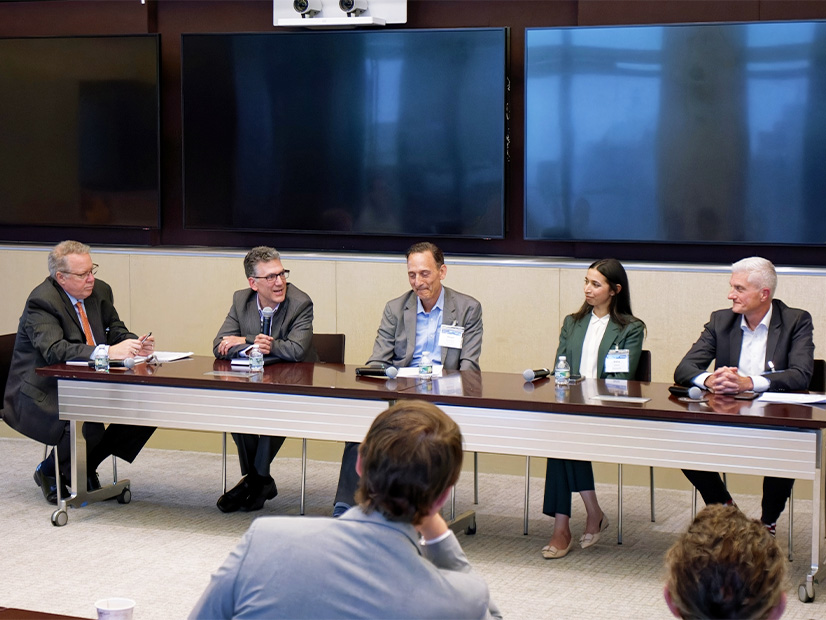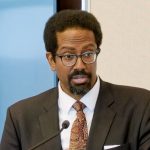
NEW YORK — The Northeast Chapter of the Energy Bar Association held its annual meeting last week in New York, a state that’s keeping attorneys practicing in the energy sector particularly busy.
The state’s leaders boast of a nation-leading climate protection plan. Other states make similar claims, but New York would surely land at or near the top of any objective ranking.
It’s a hugely complicated and expensive undertaking, with many people working to make it happen.

New York State Public Service Commission Chair Rory Christian, keynote speaker at Wednesday’s meeting, compared law to electricity: Society relies on both, expects both to function perfectly, but gives little thought to how they actually work.
The PSC has as its core mission maintaining affordable, safe, reliable, secure utility service, he said. But the passage of New York’s landmark Climate Leadership and Community Protection Act in 2019 gave the PSC a central role in climate protection as well.
And it’s taking steps every day to reduce greenhouse gas emissions from one of the largest sources: power generation.
“The results of this work will be seen in the form of changes to how our society uses and relates to the energy it needs to thrive,” Christian said.
“Each of you in this room today, in some way, will be called upon to address these concerns. Though you may not be climate lawyers by name, every lawyer in this room, in one way or another, will be working on climate change. Your clients’ needs will be increasingly driven by impacts of climate change, and it will be up to you to help support them through those efforts.”
Christian set the stage for a roundtable discussion later in the meeting about transmission infrastructure in New York, noting that PSC’s effort to reduce emissions from generation is only part of decarbonizing the power sector.
“Transmission is incredibly important because it’s integral to be successful in what we’re doing. The system we built — one based on large, central power plants — requires a different kind of transmission infrastructure than the one we envision in the future, one that’s largely decentralized, distributed, relying on smaller, more intermittent resources,” he said.
“Building out this transmission infrastructure is going to be a critical component in our efforts to meet our goals. Accomplishing this is going to require a multipronged effort above and beyond the vehicles available to us.”
Roundtable Discussion
Moderator William Hollaway, of Gibson Dunn & Crutcher, opened the roundtable on a positive note: Why have there been so many success stories with transmission infrastructure development in New York?
Asha Gandhi, a senior vice president at energyRe, offered four reasons: a policy that sets a very ambitious target for renewable energy generation and recognizes transmission’s role in that; frameworks for public-private partnerships; a structure for revenue sourcing; and a streamlined permitting process.
EnergyRe is part of one of the largest clean energy projects in the nation, partnering with the New York Power Authority and Invenergy on Clean Path NY, which entails 3.8 GW of wind and solar power and a 175-mile HVDC line to bring that electricity to the New York City region at an estimated $11 billion cost.
Other questions and responses:
Q: What have you learned about stakeholder engagement?
A: It is critical before the project starts planning, while it is being built, and then during its 40-year lifespan, said Donald Jessome, CEO of Transmission Developers Inc.
“If you don’t do stakeholder engagement, your project will never get built,” he said. “Somebody else will tell your story, and they’re not going to tell your story the way you want it to be told.”
TDI is building the Champlain Hudson Power Express from Quebec to New York City. Jessome recalled there was opposition to the project from environmentalists for how they feared it would impact the Hudson River. So, he met with them, and brought along a piece of the cable he proposed to bury below the water. Their opposition dissolved when they saw how small it was.
A: Stuart Nachmias, CEO of Con Edison Transmission, said NIMBYism is alive and well. There’s widespread support for clean energy, he said, except when its infrastructure is in somebody’s backyard.
Getting feet on the ground and getting acquainted with the people who live there can help a lot, he said, describing a field meeting with a developer who pointed out the resident who raised llamas, the neighbor who baked cookies for the crew, the farmer who asked that the construction schedule be rearranged, and the person who was mollified by a tower being relocated 10 feet.
“Things like that make a difference,” Nachmias said. “It doesn’t mean that you won’t get resistance — you still can. But it can help reduce resistance and help gain support.”
Q: How do you address and protect disadvantaged communities in the development process?
A: EnergyRe is committed to spending over $300 million on community benefits, Gandhi said. It will bury the Clean Path NY line for its entire length, and rerouted it where necessary.
A: NYPA Development President Phil Toia said the state-owned utility has an active environmental justice group embedded in the community and in the development teams, working to be sure concerns are heard and solutions are sought.
A: Nachmias said it may be impossible to route a power line away from a given community, but that line will be carrying clean power and will be accompanied with community benefits such as vocational training.
A: Jessome said a point of pride for TDI is converting the site of a fossil-fired power station in a New York City pollution zone into the terminus for the CHPE line.
Q: What impediments exist to building all the transmission and generation that needs to be built?
A: Nachmias said there need to be transmission corridors rather than lines, especially for something like offshore wind.
“We didn’t build the highways one lane at a time. The real way you’re going to not get community support is to put one line in, and then come back and do the second line, and come back and build the third line. That’s a recipe for failure.”
Developers are not only not incentivized to build extra transmission, but they are also disincentivized, he said. Generation should be built separately from transmission, he added, so that first users of the transmission asset need not bear the entire cost of something that probably will outlive their generation asset.
“We’re going to get one chance to get it right,” Nachmias said.
A: Gandhi said energyRe would tend to agree that the process to bring offshore electricity onshore is not efficient, and the European model has been to build out the grid first, then allow interconnection.
Q: What if a latent bottleneck is created in the first wave of projects that will manifest itself as a barrier to later waves?
A: “That’s the entire point of running all the NYISO studies,” Gandhi said. “Hopefully, what we know, we’re managing. Being the first is not always the easiest.”
A: Toia said the state’s 2040 goals are very clear. “So that’s the North Star here, directing us where we’ll go. Will we get everything right? Probably not. But we have a clear direction of where we are headed,” Toia said.
Current NYPA transmission projects are addressing decades-old congestion, he added. “So, it’s not that we were perfect before, either. That’s just the nature of the system.”
Q: Where do you look for signals and guidance?
A: Economic factors, market dynamics and the policy decisions that drive them, Gandhi said.
A: Reliability is a fundamental guiding principle, Nachmias said.
A: Demand-side signals are very important, but we still need supply, Jessome said.
Part of the Solution
Hollaway closed the session with the thought that the processes discussed Wednesday need to extend beyond policymakers, energy developers and attorneys to the millions of people who ultimately will reap the benefits of the decisions being made — as well as foot the bill.
The need, in other words, is for people to realize they are part of the solution.
“That might mean land use, but it also means contributing into the pot to help defray the cost of these things,” he said.
The increasing visibility of electric cars and other tangible signs of change may help this happen, he said.
“As people see that, maybe they’ll start to say, ‘You know, I AM part of this transition, and I do have a responsibility to pay, I am a beneficiary,’” Hollaway said.
“Maybe the whole beneficiary-pays thing will become less abstract once people are actually seeing how this stuff hits home with them.”

